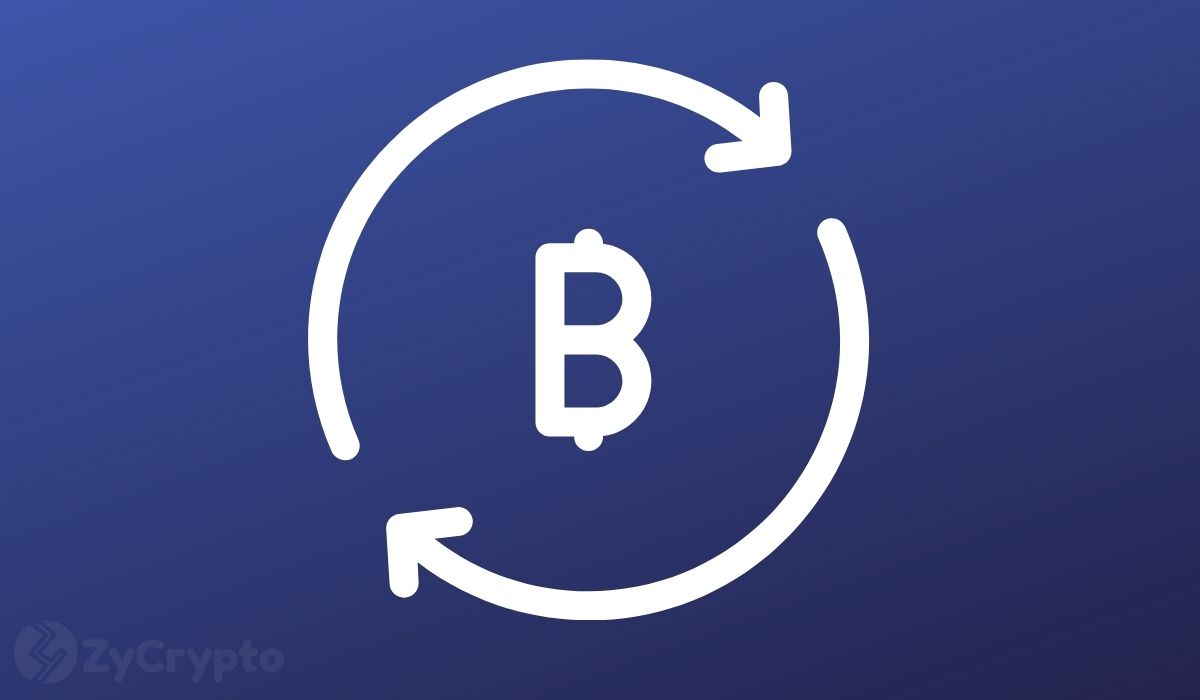 web3.0
web3.0 Bitcoin ETF Options Arrive in the U.S., Promising a New Era of Market Stability and Growth
Bitcoin ETF Options Arrive in the U.S., Promising a New Era of Market Stability and GrowthLast month, the Securities and Exchange Commission (SEC) granted approval to Nasdaq ISE to list and trade options on Blackrock’s iShares Bitcoin Bitcoin

Bitcoin options are finally coming to the U.S. market.
Last month, the Securities and Exchange Commission (SEC) granted approval to Nasdaq ISE to list and trade options on Blackrock’s iShares Bitcoin Trust (IBIT), marking a significant step toward bringing regulated bitcoin options to the U.S.
Although most retail investors who own bitcoin will not utilize this financial instrument, its availability in the U.S. may impact the adoption, liquidity, and volatility of bitcoin.
This development promises to further ingrain bitcoin into the global financial system and support continued growth of the bitcoin network – and will forever change the way bitcoin is utilized as a part of an overall investment portfolio.
Similar financial instruments have been available for a while, but until now they have only available on platforms outside the U.S., like Deribit. However, the approval from the SEC for IBIT options means that investors in the U.S. will have access to these contracts within a regulated framework.
The U.S. has long been considered the leader in global finance, boasting the largest and most liquid equity and debt markets, with a wide range of financial instruments and a diverse investor base. By approving bitcoin ETF options in these markets, regulators will allow bitcoin investors unprecedented access to robust financial tools to manage risk and exposure.
And, as institutional players like hedge funds and pension funds begin using bitcoin options, liquidity in the market will naturally increase, making it easier for large-scale trades to occur without destabilizing the asset’s price.
What Are Bitcoin ETF Options?
Bitcoin options are contracts that give the holder the right, but not the obligation, to buy or sell bitcoin at a predetermined price within a certain time frame. For institutional investors, these options provide a means to hedge against price volatility or to speculate on market movements without needing to hold the underlying asset.
With options trading, investors can now hedge their bitcoin exposure more effectively or amplify potential returns through leverage. This flexibility may attract a wider variety of participants, offering new ways to approach bitcoin price exposure without directly buying the asset itself.
In the future, regulated bitcoin options in the U.S. may lead to significant growth in its synthetic notional value, which refers to the total value of outstanding derivative contracts in the market. As options trading expands, the notional value tied to bitcoin could increase substantially, without requiring physical bitcoin to be bought or sold. This opens up a new avenue for market engagement while amplifying bitcoin’s influence in the global economy.
How Bitcoin Options Will Work
IBIT options will be subject to existing ETF option trading rules, including criteria around listing, margin requirements, and trading halts, ensuring they integrate seamlessly into the broader financial system.
The approved rule includes strict position and exercise limits, capping positions at 25,000 contracts. This limit is notably conservative compared to other ETFs – some of which have limits as high as 250,000 contracts – and was designed to minimize the risk of market manipulation.
Additionally, the SEC and Nasdaq ISE have implemented robust surveillance and reporting mechanisms, ensuring that trades are carefully monitored for any signs of fraud or manipulation.
The regulatory framework also includes access to surveillance from the CME’s bitcoin futures market, providing real-time oversight that tracks both the futures and spot markets, which are highly correlated.
These options will be physically settled and follow the American-style exercise method, meaning they can be exercised at any point before their expiration.
How To Use Bitcoin Options To Hedge Exposure
Bitcoin options offer a sophisticated way to manage risk and hedge exposure to its volatility. A common hedging strategy involves purchasing put options, which give you the right to sell bitcoin at a predetermined price (the strike price) within a specific time frame. This allows you to protect against a potential decline in bitcoin’s price.
For example, if you hold a significant amount of bitcoin and grow concerned about a short-term price drop, you could buy a put option. If bitcoin's price falls below the strike price, the put option can be exercised, letting you sell the bitcoin at the higher strike price and limiting your losses.
On the other hand, call options are used to hedge missed opportunities or upside potential. By buying a call option, you secure the right to buy bitcoin at a specified price if its market value rises, allowing you to participate in gains without fully exposing yourself to the asset’s volatility upfront.
Both of these strategies allow you to manage your bitcoin positions more precisely, without being forced to sell the underlying asset in a downturn or miss out on potential profits during upward trends.
Liquidity And Its Effect On Bitcoin Volatility
Improved liquidity resulting from the introduction of bitcoin ETF options will have an effect on the volatility of its price.
When a market has higher liquidity, larger trades can occur without significantly affecting the price of the asset. This is because more liquidity means there are more buyers and sellers available at any given time, which dampens the effect of any single transaction on the
The above is the detailed content of Bitcoin ETF Options Arrive in the U.S., Promising a New Era of Market Stability and Growth. For more information, please follow other related articles on the PHP Chinese website!
 Bitcoin (BTC) Struggles to Hold Above $60K, Another $200M LiquidatedAug 05, 2024 am 10:11 AM
Bitcoin (BTC) Struggles to Hold Above $60K, Another $200M LiquidatedAug 05, 2024 am 10:11 AMBitcoin can't seem to leave the $60,000 price level as it continues to trade in uncertainty. On Saturday, August 3, the cryptocurrency experienced another sharp decline, briefly dipping below the $60,000 mark.
 Bitcoin (BTC) Price Prediction 2022: Will BTC Hit $500,000 by October 2025?Sep 11, 2024 am 09:15 AM
Bitcoin (BTC) Price Prediction 2022: Will BTC Hit $500,000 by October 2025?Sep 11, 2024 am 09:15 AMBitcoin traded in the red for the second consecutive day on August 15, falling -3.42% to $58,942.27 on the BTC to USD charts in the last 24 hours.
 Rate Cuts Alone Won't Help Bitcoin Regain Footing, Says BitMex Founder Arthur HayesAug 30, 2024 am 12:17 AM
Rate Cuts Alone Won't Help Bitcoin Regain Footing, Says BitMex Founder Arthur HayesAug 30, 2024 am 12:17 AMThe influence of US macroeconomics on Bitcoin has resurfaced, with crypto responding to developments from policymakers.
 Bitcoin Price Prediction: How Low Can It Go?Sep 06, 2024 pm 09:49 PM
Bitcoin Price Prediction: How Low Can It Go?Sep 06, 2024 pm 09:49 PMBitcoin is going through a rough patch, with predictions from BitMEX co-founder Arthur Hayes indicating it might drop below $50,000 this weekend.
 Bitcoin (BTC) Price Rallies Ahead of Inflation Print, Falls After CPI Report Comes In CoolAug 17, 2024 pm 06:23 PM
Bitcoin (BTC) Price Rallies Ahead of Inflation Print, Falls After CPI Report Comes In CoolAug 17, 2024 pm 06:23 PMIt could be a buy the rumor, sell the news situation with Bitcoin price and the Labor Department's CPI report Wednesday morning.
 Crypto ETF Options Likely by Q4 2024, But Bitcoin and Ether Prices Could Face Downward PressureAug 13, 2024 am 06:46 AM
Crypto ETF Options Likely by Q4 2024, But Bitcoin and Ether Prices Could Face Downward PressureAug 13, 2024 am 06:46 AMFollowing the U.S. Securities and Exchange Commission's (SEC) approval of spot bitcoin ETFs and spot ether ETFs, attention has shifted to the potential for the SEC to greenlight options trading on these funds.
 Arthur Hayes Identifies Key Factor in Bitcoin StagnationSep 04, 2024 am 03:40 AM
Arthur Hayes Identifies Key Factor in Bitcoin StagnationSep 04, 2024 am 03:40 AMArthur Hayes, co-founder and former CEO of BitMEX, stated that the recent U.S. Federal Reserve interest rate cut might not significantly influence
 Bitcoin (BTC) Surges Past $75,000, Reaching New All-Time HighNov 09, 2024 am 03:26 AM
Bitcoin (BTC) Surges Past $75,000, Reaching New All-Time HighNov 09, 2024 am 03:26 AMBitcoin (BTC) surged past $76,000 on Friday, November 8, reaching an all-time high as political certainty surrounding the U.S. presidential election provided a boost to the cryptocurrency.

Hot AI Tools

Undresser.AI Undress
AI-powered app for creating realistic nude photos

AI Clothes Remover
Online AI tool for removing clothes from photos.

Undress AI Tool
Undress images for free

Clothoff.io
AI clothes remover

AI Hentai Generator
Generate AI Hentai for free.

Hot Article

Hot Tools

SublimeText3 Mac version
God-level code editing software (SublimeText3)

Dreamweaver Mac version
Visual web development tools

SublimeText3 Chinese version
Chinese version, very easy to use

VSCode Windows 64-bit Download
A free and powerful IDE editor launched by Microsoft

SublimeText3 Linux new version
SublimeText3 Linux latest version





